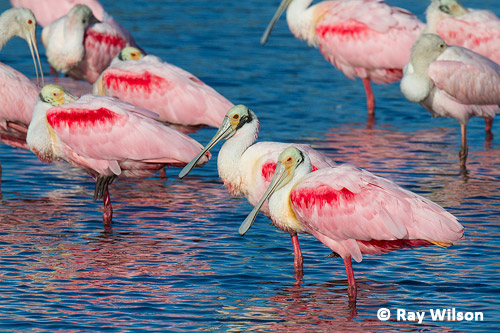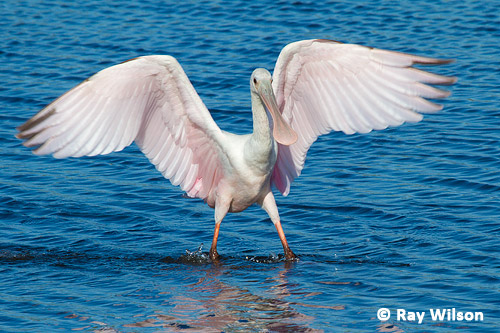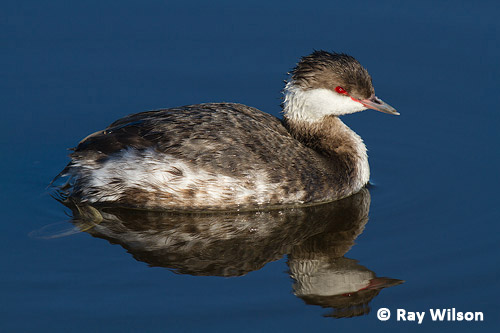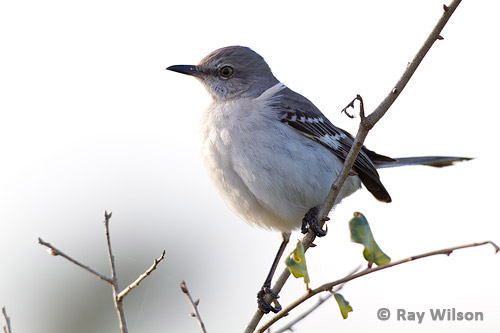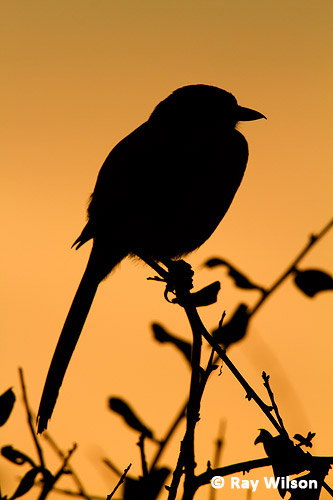
- Home
- Workshops / Tours
- Diary / Blog
- Galleries
- Foreign Trips
- Tasmania 2016
- NE Queensland 2016
- Western Alps 2016
- NE Spain 2016
- Australia's Wet Tropics 2015
- Australia's Top End 2015
- SW Australia 2015
- Switzerland 2015
- Andalucia 2015
- Belize 2015
- Australia 2014
- Switzerland 2014
- Belize 2014
- Bahama Islands 2014
- Switzerland 2013
- Ecuador 2012-2013
- Florida 2011-2012
- Vancouver Island 2011
- Australia 2010
- Peru 2008
- Bulgaria 2007
- Lesvos 2006
- California 2006
- New Zealand 2005
- Extremadura 2005
- Goa, India 2004
- The Gambia 2003
Florida, USA
16th December 2011 - 4th January 2012
Merritt Island
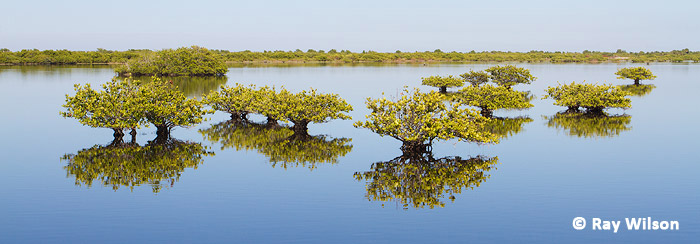
The combined areas of Merritt Island Wildlife Management Area, Cape Canaveral National Seashore and the Kennedy Space Center provide over quarter of a million acres of relatively undisturbed land that is a haven for wildlife, including 15 species listed as federally threatened or endangered.
Roseate Spoonbill (Ajaia ajaja)
Birdlife is abundant on the island with large numbers of herons, ibis, spoonbills, waterfowl and shorebirds using the lagoons and inlets for their wintering grounds and migration stop-off points.
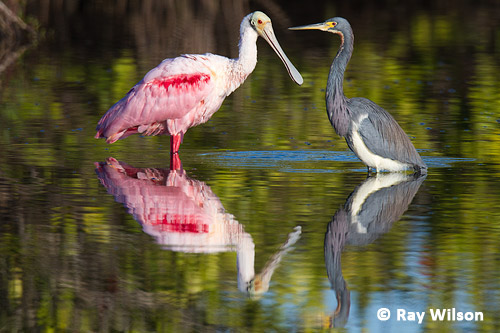
Roseate Spoonbill (Ajaia ajaja) & Tricolored Heron (Egretta tricolor)
The most productive place for photography in the refuge is the 7-mile long Black Point Wildlife Drive. Consequently, it is also very busy and there is often a queue of cars waiting for the gates to open at sunrise.
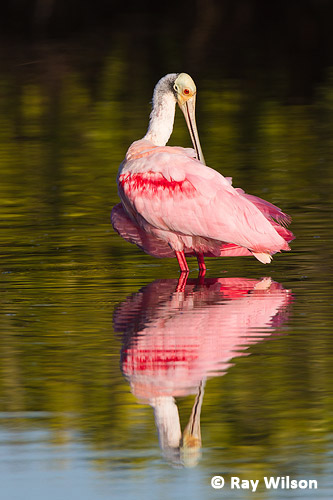 |
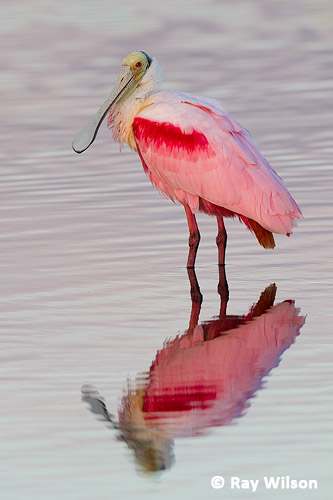 |
Roseate Spoonbill (Ajaia ajaja)
The most spectacular bird you can see along the wildlife drive is the Roseate Spoonbill. It is a wonderful sight when look out over the lagoons and see a flock of over 50 of these large birds with their pastel pink plumage glowing in the golden early morning or late afternoon light.
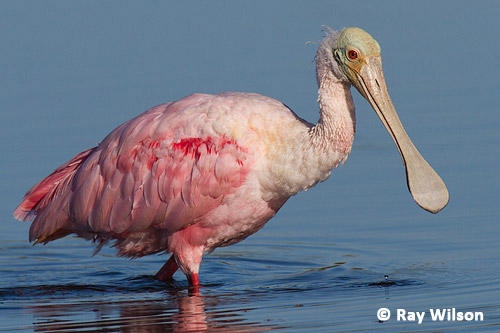
Roseate Spoonbill (Ajaia ajaja)
Roseate Spoonbills are a mainly tropical species and are found throughout most of South and Central America. In USA they are only found in the south around the Gulf of Mexico and the Florida coast.
juvenile Roseate Spoonbill (Ajaia ajaja)
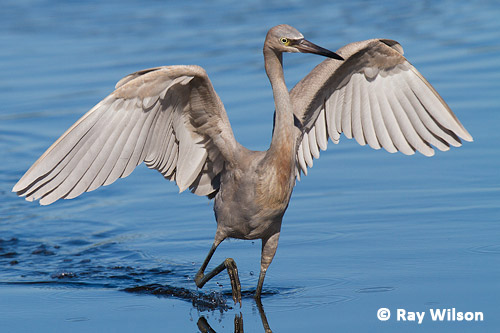
juvenile Reddish Egret (Egretta rufescens)
Reddish Egrets are always extremely entertaining to watch when they are fishing. Unlike most other herons and egrets, the Reddish Egret employs a far more active approach, darting about frantically chasing the fish instead of waiting motionless for a fish to come within striking range. They do, however, occassionally have a break from their manic chasing to briefly "umbrella" hunt.
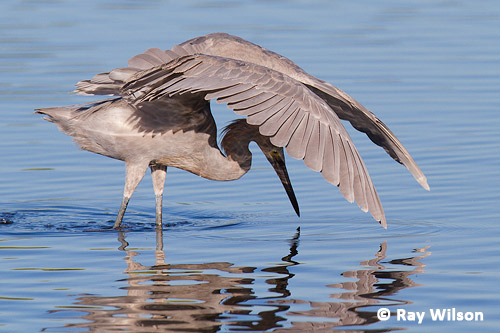
Reddish Egret (Egretta rufescens) umberella feeding
Holding their wings out to form a shade not only helps cut down reflections and make it easier to see the fish, but also exploits fish's natural tendency to seek the safety of shady spots.
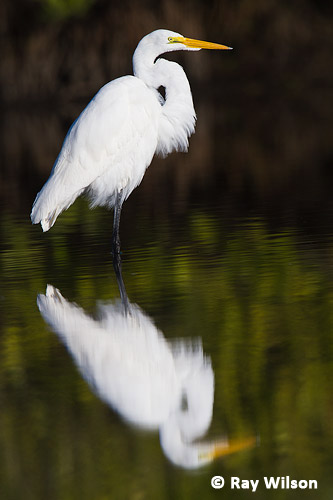
Great Egret (Ardea alba)
One of the best spots along the drive is the Cruikshank trailhead. On the 4 days I visited, there was consistently a good selection of egrets, spoonbills and ibis feeding in the lagoon on the incoming tide within easy photographic range. As a bonus, an extremely tame winter plumage Horned Grebe was fishing only a few metres from the bank and was often too close to focus on.
Slavonian Grebe / Horned Grebe (Podiceps auritus)
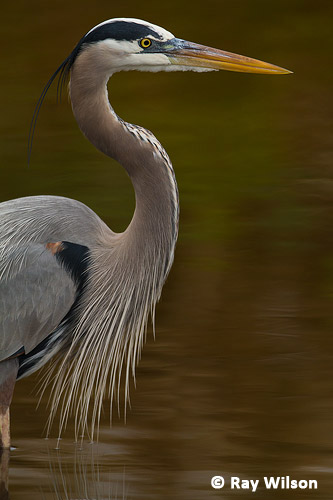
Great Blue Heron (Ardea herodias) |
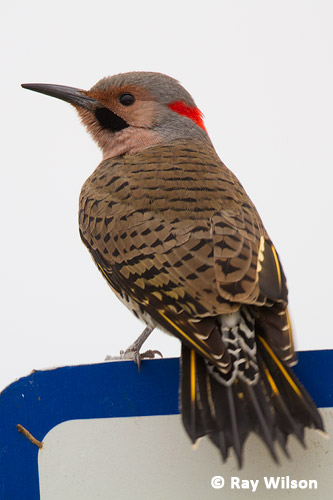
Northern Flicker (Colaptes auratus) |
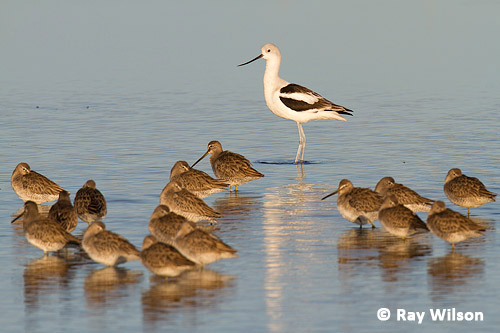
American Avocet (Recurvirostra americana) & Short-billed Dowitchers (Limnodromus griseus)
Shorebirds were not massively numerous along the wildlife drive due to the water levels being too high to expose many mudbanks. Subsequently, the majority of the individuals belonged to the longer-legged species such as American Avocet, Willet, Short-billed Dowitchers and Lesser Yellowlegs.
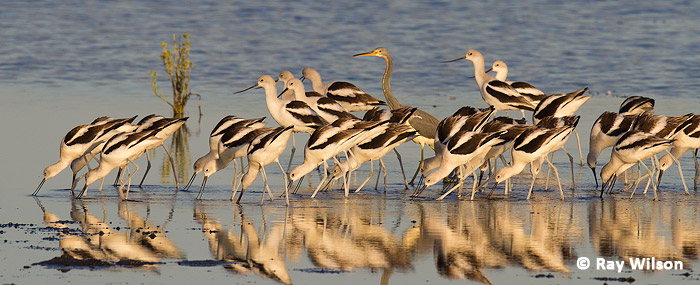
American Avocet (Recurvirostra americana) & Tricolored Heron (Egretta tricolor)
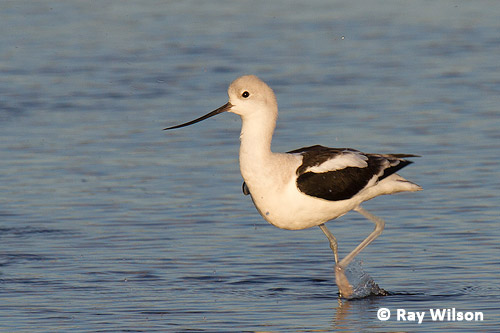
American Avocet (Recurvirostra americana)
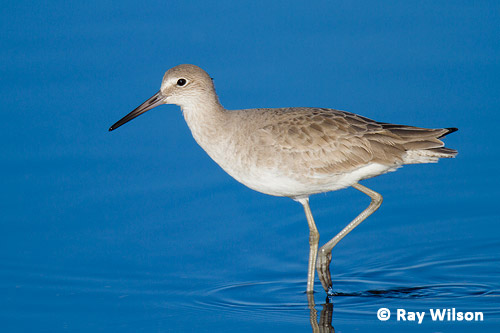
Willet (Catoptrophorus semipalmatus)
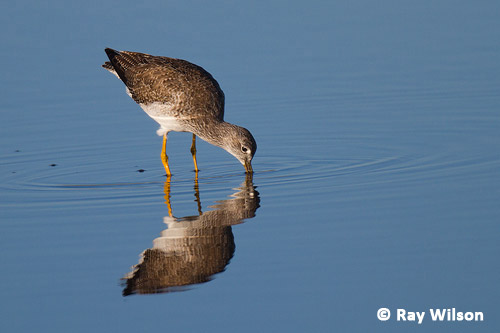
Lesser Yellowlegs (Tringa flavipes)
Wildfowl is abundant on many of the lagoons and although American Coot made up the vast majority of birds, many species of duck are also present.
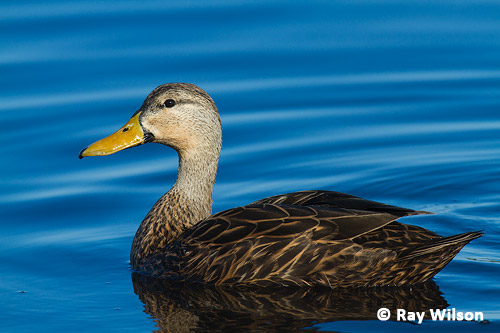
Mottled Duck (Anas fulvigula)
In the US, Mottled Duck is only found in Florida and along the Gulf of Mexico coast and a few pairs were frequently seen close to the road.
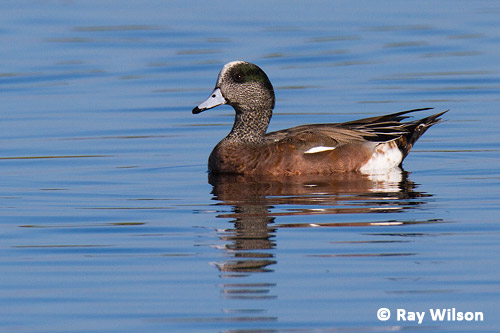
American Wigeon (Anas americana)
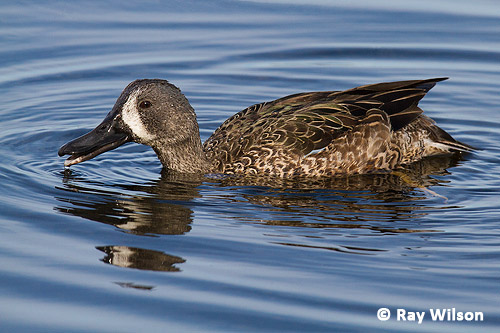
1st-year male Blue-winged Teal (Anas discors)
Other places in the Refuge that are worth exploring are the numerous dirt tracks that circle the lagoons and empoundments close to the Titusville bridge and Biolab Road which can be accessed from the Biolab boat ramp (about 2 miles south of the Manatee viewing area) or from the Canaveral Seashore (a permit for either the wildlife drive or the Canaveral National Seashore is required for access to Biolab Road). The shallow lagoons beside the Catfish loop and East Gator Creek Road are particularly good for roosting shorebirds at high tide.
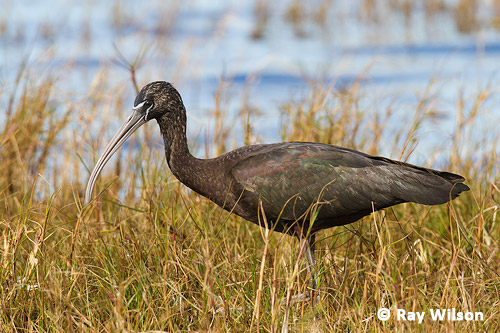
Glossy Ibis (Plegadis falcinellus)
Alligators are common throughout the refuge and many large individuals can be seen along the wildlife drive, Biolab Road and in the Gator Road/Peacock's Pocket Road area.
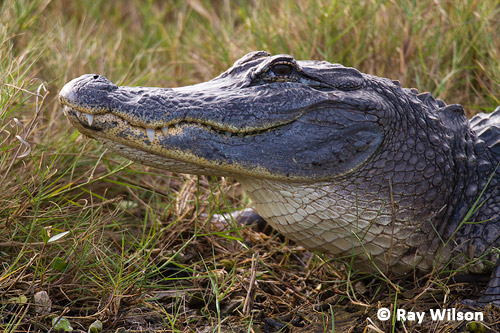
American Alligator (Alligator mississipiensis)
Northern Mockingbird (Mimus polyglottos)
Merritt Island and the Cape Canaveral Seashore are home to the world's second largest population of Florida Scrub-Jay, Florida's only endemic bird species.
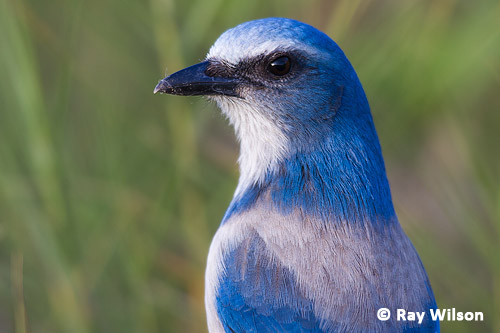
Florida Scrub-Jay (Aphelocoma coerulescens)
They can be easily seen along the Scrub Ridge Trail and show absolutely no fear of humans. While I was sitting photographing them, the individual above bounced towards me, jumped onto my boot and spent about a minute trying to untie my shoelaces!
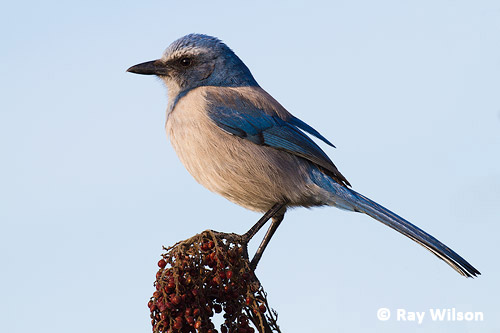
Florida Scrub-Jay (Aphelocoma coerulescens)
In 2007 there was estimated to be at most 6500 Florida Scrub-Jays left and they are listed as Vulnerable by the IUCN as their population continues decline due to habitat destruction.
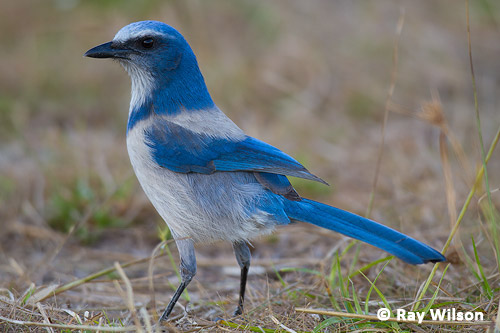
Florida Scrub-Jay (Aphelocoma coerulescens)
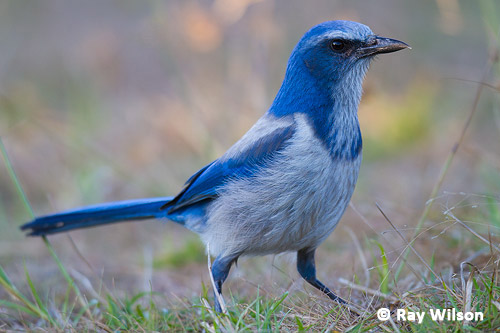
Florida Scrub-Jay (Aphelocoma coerulescens)
Florida Scrub-Jay (Aphelocoma coerulescens) sillouetted against the sunset
Ray Wilson owns the copyright of all images on this site.
They may not be used or copied in any form without prior written permission.
raywilsonphotography@googlemail.com
